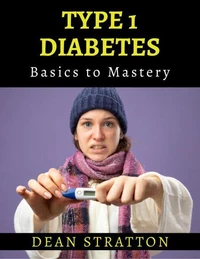From the first hint of imbalance to months of rebuilding strength, this guide shows how to spot a brain attack quickly, what happens in the emergency department, and how evidence-based rehabilitation restores function. It translates neurology and vascular science into plain language for families, clinicians-in-training, and caregivers. Imagine a 52-year-old teacher at breakfast; a coffee mug slips, one corner of the smile fades-what you do in the next ten minutes can protect neurons and independence.
Learn the BE-FAST warning signs, the care pathway from imaging to time-sensitive therapies, ways to lower risk through blood pressure control, atrial fibrillation management, lipid and glucose targets, and how movement, speech, and cognition recover with structured therapy. Practical tools include checklists, case vignettes, diagrams, and scripts for calling emergency services and advocating in hospital.? Types clarified: ischemic vs hemorrhagic, transient ischemic attack, and common mimics? Action plan: BE-FAST checklist; how to activate emergency care; what to expect in triage, imaging, and a dedicated unit? Acute care explained: clot-dissolving medicines and mechanical thrombectomy at a glance; monitoring for swelling or bleeding? Rehabilitation roadmap: goal-based physical, occupational, and speech therapy; neuroplasticity principles; milestones and plateaus? Secondary prevention: hypertension control, anticoagulation for atrial fibrillation, statins, diabetes and sleep-apnea management; medication trackers? Life after an event: mood and cognition, fatigue, sexuality, driving/work readiness; caregiver resilience and community resources
From the first hint of imbalance to months of rebuilding strength, this guide shows how to spot a brain attack quickly, what happens in the emergency department, and how evidence-based rehabilitation restores function. It translates neurology and vascular science into plain language for families, clinicians-in-training, and caregivers. Imagine a 52-year-old teacher at breakfast; a coffee mug slips, one corner of the smile fades-what you do in the next ten minutes can protect neurons and independence.
Learn the BE-FAST warning signs, the care pathway from imaging to time-sensitive therapies, ways to lower risk through blood pressure control, atrial fibrillation management, lipid and glucose targets, and how movement, speech, and cognition recover with structured therapy. Practical tools include checklists, case vignettes, diagrams, and scripts for calling emergency services and advocating in hospital.? Types clarified: ischemic vs hemorrhagic, transient ischemic attack, and common mimics? Action plan: BE-FAST checklist; how to activate emergency care; what to expect in triage, imaging, and a dedicated unit? Acute care explained: clot-dissolving medicines and mechanical thrombectomy at a glance; monitoring for swelling or bleeding? Rehabilitation roadmap: goal-based physical, occupational, and speech therapy; neuroplasticity principles; milestones and plateaus? Secondary prevention: hypertension control, anticoagulation for atrial fibrillation, statins, diabetes and sleep-apnea management; medication trackers? Life after an event: mood and cognition, fatigue, sexuality, driving/work readiness; caregiver resilience and community resources

 , qui est-ce ?
, qui est-ce ?